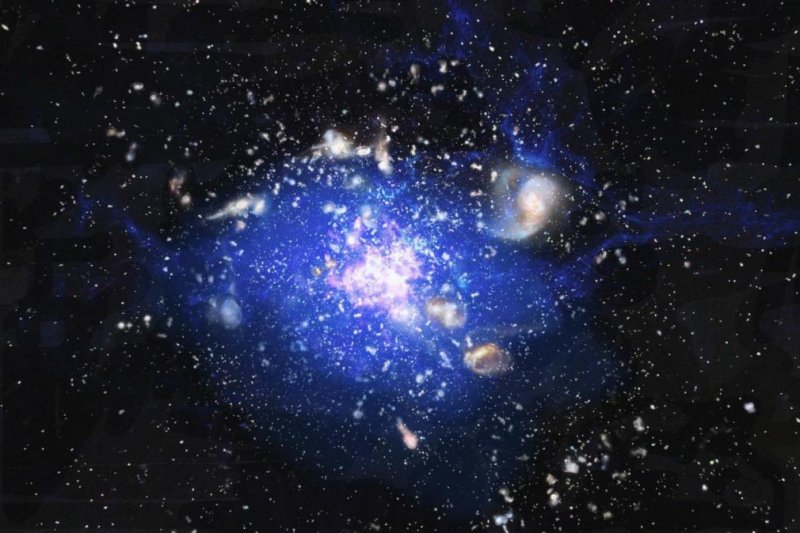An artistic impression reveals a massive ocean, or cloud, of cold cosmic gas, the fuel feeding growing supergalaxies at the center of galactic clusters. Photo by M. Kornmesser/ESO
MADRID, Dec. 2 (UPI) -- New astronomical observations suggest "supergalaxies," the largest galaxies in the universe, are born of cosmic clouds of cold gas.
Previously, scientists believed supergalaxies were formed by merging galaxies at the center of galactic clusters. But data recorded by the Very Large Array and the Australia Telescope Compact Array suggests otherwise.
"In the local universe we see galaxies merging, and we expected to observe that the formation of supergalaxies took place in the same way, in the early -- now distant -- universe," Bjorn Emonts, a researcher at the Astrobiology Center in Spain, said in a news release.
Emonts and an international team of astronomers pointed the VLA and ATCA at the center of an embryonic galaxy cluster where the Spiderweb galaxy is forming. There they observed a giant cloud made up mostly of molecular hydrogen, a main building block for new stars.
The discovery -- detailed in the journal Science -- suggests supergalaxies are condensed directly from massive cosmic clouds.
"It is surprising how cold this gas is, at some 200 degrees below zero Celsius," said Matthew Lehnert, a researcher at the Astrophysics Institute of Paris. "We would have expected a lot of collapsing galaxies, which would have heated the gas, and for that reason we thought that the carbon monoxide would be much more difficult to detect."
The observations of VLA and ATCA showed the cold cosmic gas wasn't inside the smaller galaxies being subsumed by the Spiderweb galaxy, but was interwoven throughout the budding supergalaxy and the interior of the galactic cluster.
"Spiderweb is an astonishing laboratory, which lets us witness the birth of supergalaxies in the interiors of clusters, which are the 'cosmic cities' of the universe," said George Miley, an astronomer at the University of Leiden. "We are beginning to understand how these giant objects formed from the ocean of gas which surrounds them."















